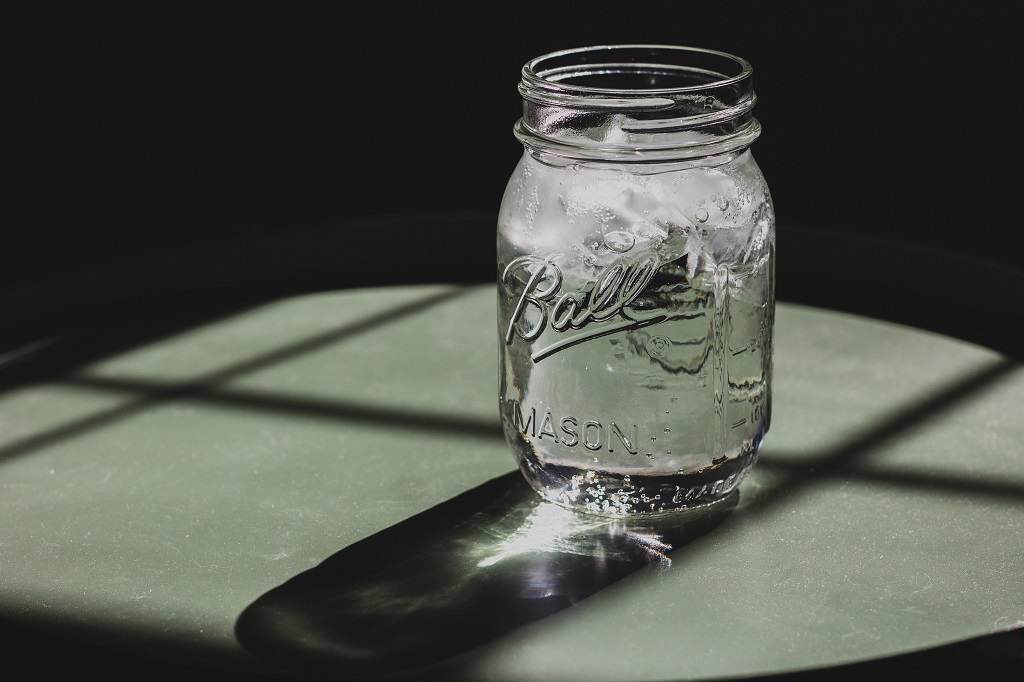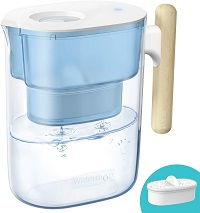Everyone has learned that water is life and the importance of safe drinking water. With the water crisis news keeps showing up, more and more people start to concern about the safety of their municipal water. Among all the drinking water sources, approximately 71% of Americans drink tap water.
According to a recent Gallup poll, Americans have raised their attention to drinking water quality since 2017. The poll shows that about 63% of Americans suggest that they are “extremely concerned” over drinking water safety.
What Is Chlorine
The name Chlorine is derived from the Greek word “chloros,” meaning greenish-yellow. The appearance of chlorine is a greenish-yellow dense gas with a choking smell that is similar to bleach. Because of its toxic nature, chlorine was used as a chemical weapon during World War I. Chloramine is a chemical variant of chlorine that contains ammonia, and is generally safe to drink and use around the home in the same way traditional, chlorine-treated tap water would be.
How Is Chlorine Used
As one of the ten highest volume chemicals manufactured in America, chlorine is wildly used in industry and home cleaning products. Some water utilities typically use chloramine as a secondary disinfection method to ensure germs and other pathogens are removed from the water supply. It is most often used as a replacement for traditional chlorine, which can cause build up over time.The applications of chlorine can also be found in numerous consumer products ranging from paper to paints, and from insecticides to textiles.
Because chlorine can kill bacteria, it is used as a disinfectant for water treatment, including both drinking water and swimming pool water.
The process of using chlorine to disinfect water is called chlorination. The history of using chlorination to disinfect water can date back to over a century ago. The chlorination uses various types of chlorine or substances containing chlorine for oxidation and disinfection.
As one of the most popular water disinfection methods, chlorination has been used for many years with its strong ability to kill bacteria and viruses. However, chlorine is ineffective in some protozoan cysts. Besides, chlorination can result in a carcinogenic disinfection by-product called trihalomethanes, which has been concern in many communities with the hesitation in the continuation of this method.
Chlorine Water Dangerous
Is drinking chlorine water hazardous? Well, the chlorine water would not generate immediate harmful effects to you, but drinking chlorine water, in the long run, is bad for your health. Depending on the duration and amount of chlorine water intake, below are some signs and symptoms caused by chlorine:
- Gastrointestinal illness: The ingestion of chlorine water can lead to corrosive tissue damage to our gastrointestinal tract. That is the reason why many people feel stomachache after drinking tap water for a long period of time. The tap water that carries chlorine residues is one big reason.
- Allergy: Exposure to a small amount of chlorine can cause skin or eye irritation, while a large amount of chlorine exposure can cause serious chemical burns or ulcerations. Long-term contact with chlorine water might lead to eye or dermal allergies. A recent study also found that participants with high chlorine water intake were more likely to have food allergies.
- Inhalation: This is probably the most apparent symptom as the majority of chlorine exposures occur via inhalation. The chlorine in the air will lead to skin/eye/nose irritation.
The asthma symptoms are commonly found among swimmers as they are often exposed to chlorine in swimming pools. Similarly, if you shower or take a bath in chlorinated water, you face a higher risk of respiratory problems.
Eary warning of the chlorine present in the air can be noticed by its odor, but chlorine can cause olfactory fatigue or adaptation that reduces awareness of the substance.
Compared to adults, children are more vulnerable to chlorine or chlorine water. Due to the organ surface area to body weight ratios as well as shorter height, children may be exposed to higher levels of chlorine than adults in the same location.
How to Remove Chlorine from Drinking Water
One great way to remove chlorine from drinking water is through physical filtration. Instead of adding another layer of chemicals to remove chlorine, physical filtration like using a water filter is recommended.
There are so many water filters on the market with different filtration media. Which one to choose? Carbon filter, especially activated carbon filter, is one of the best filtration media in terms of chlorine removal.
The reason for the “best” ranking is because of carbon’s efficiency and low cost. Unlike other filtration systems that require installation and maintenance, carbon filters are commonly used in water filter pitchers that can be purchased at a reasonably low price.
The Waterdrop Chubby water filter pitcher is an ideal option to filter out chlorine. Tested and certified by NSF international, this water filter pitcher is proven to effectively remove chlorine, fluoride, lead and other heavy metals in water. It features a 10-cup large capacity and fast filtration speed, enough to keep the whole family hydrated. The new filter technology allows the filter to last three months, about 5 times longer than the normal filter cartridges on the market.




